Cats are not only our companions but also members of our families who deserve love, care, and relaxation. One effective way to provide your feline friend with the relaxation they need is through massage. Massaging your cat not only helps them sleep better but also strengthens the bond between you and your pet. This guide will walk you through the process of giving your cat a calming massage that will ease them into peaceful slumber.
What Cat Massages Are
Cat massages are gentle, rhythmic stroking of your cat’s body designed to relax and soothe them. They employ techniques similar to human massages, with the added element of petting, which is familiar and comforting to cats. Cat massages are tailored to the cat’s preferences and sensitivity levels, focusing on areas like the head, neck, and spine while avoiding sensitive areas like the belly and feet. This practice can help reduce stress, improve circulation, and promote overall wellbeing in your feline friend.
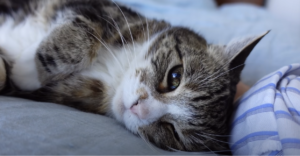
Why Is Massage Important For Your Cat?
Massage plays a crucial role in your cat’s overall health and wellbeing. Regularly massaging your cat can lead to improved circulation, which aids in the removal of toxins and increases the delivery of oxygen and nutrients to the muscles. Additionally, it can decrease stress and anxiety levels, resulting in a more relaxed and content cat.
Lastly, and perhaps most importantly, massage strengthens the bond between you and your cat, fostering trust, attachment, and affection. Your cat will associate your touch with comfort and relaxation, further enriching your relationship. [1]
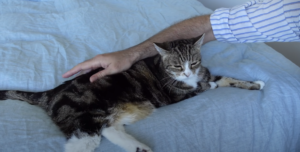
Different Ways To Massage Your Cat
There are several approaches to massaging your cat, and these can be tailored to suit your pet’s preferences.
- Neck and Shoulder Rubs: Start by gently stroking the area around your cat’s neck and shoulders with your fingertips, using slow and rhythmic motions. This region generally carries a lot of tension, so gentle massaging can help to relax your cat.
- Head Massage: Using your thumb and forefinger, softly rub your cat’s temples in a circular motion. Be careful not to apply too much pressure. You can also gently massage the area around your cat’s ears and chin, as many cats enjoy being petted in these areas.
- Back Massage: Run your hand down the length of your cat’s back, from the neck to the base of the tail. Repeat this motion several times, applying gentle pressure.
- Tail Massage: With a light touch, run your hand down your cat’s tail starting from the base. Some cats might not enjoy this, so watch your cat’s reactions and stop if they seem uncomfortable.
How To Massage A Cat Like A Pro
To massage a cat like a pro, start by creating a calm and quiet environment where your cat can relax. Then, follow these steps:
- Start Slowly: Begin the massage by petting your cat gently to get them used to your touch. Start from the head and slowly move towards the tail. This also helps you gauge their comfort level and mood before starting the massage.
- Use Both Hands: If your cat is comfortable with it, using both hands can be beneficial. One hand can stabilize your cat while the other performs the massage.
- Focus on the Favorite Spots: Cats usually enjoy massages around their cheeks, the base of their ears, and under their chin. They also appreciate gentle strokes along their spine and around the base of their tail. Concentrate your efforts on these areas, but be careful to avoid the belly unless your cat is very comfortable and trusts you completely.
- Watch the Reaction: Pay close attention to your cat’s reactions during the massage. If they start to move away or show discomfort, stop the massage and give them some space.
- Keep It Short: A cat’s attention span can be quite short, and they may get restless if the massage drags on. Aim for short and regular sessions rather than long ones. [2]
Hit Meow One More Time: Cat Massage Points
Like in humans, certain points on a cat’s body respond well to gentle pressure or touch – these are often referred to as massage points. Massage these areas can bring added comfort and relaxation to your cat. Here are some specific points to focus on:
- The Base of the Ears: This is a favorite spot for many cats. Use your thumb and forefinger to gently massage this area in a circular motion.
- The Cheeks: Cats have scent glands in their cheeks, and they often enjoy gentle rubs here. Using the tips of your fingers, gently rub your cat’s cheeks in a circular motion.
- The Spine: Running your hand along your cat’s spine can be very soothing. Start from the base of the neck and move towards the tail, applying gentle pressure.
- The Base of the Tail: Many cats enjoy having the base of their tail massaged. To apply gentle pressure and make small, circular movements, use your thumb and forefinger.
- The Chin and Throat: These are areas of relaxation for cats. Gently stroke these areas, but be cautious not to apply too much pressure.
How Do I Check For My Cat’s Feedback?
Determining your cat’s feedback during the massage is crucial to ensure they are enjoying the process and not feeling uncomfortable. Here’s a quick guide to interpreting your cat’s reactions:
- Purring: A purring cat is typically a content cat. If your cat purrs while you’re massaging, it’s a good sign they are enjoying it.
- Body Language: The body language of your feline companion can offer valuable insights and understanding. If they are relaxed, their body will be loose and not tense. Ears will be in a neutral or forward position, and their tail will be still or casually waving.
- Eye Contact: When your cat maintains eye contact with you and their eyes are half-closed, it’s a sign that they are feeling relaxed and content.
- Vocalizations: Positive vocalizations, such as soft meows or trills, can also indicate that your cat is enjoying the massage. [3]
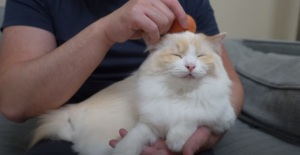
Conversely, if your cat hisses, growls, or swipes at you, stop the massage immediately as these are signs of discomfort or annoyance. Similarly, if your cat tries to move away from you, let them go – don’t force the massage. Remember, each cat is unique, and what one may enjoy, another may not. It’s all about understanding and respecting your feline’s individual preferences and boundaries.
Why You Need A Cat Massager?
Investing in a cat massager can significantly enhance your feline friend’s well-being and quality of life. Here are a few compelling reasons why a cat massager is a worthy addition to your pet care arsenal:
- Promotes Relaxation and Reduces Stress: Regular massages can soothe your cat, promoting calmness and reducing stress, especially for anxious cats.
- Enhances Bonding: Gently massaging your cat can strengthen the bond between you and your furry friend. It’s a wonderful opportunity to share precious moments together and show your love and care.
- Improves Circulation: Massaging stimulates blood flow, which can help enhance your cat’s overall health and vitality.
- Detect Health Issues Early: Regular physical contact allows you to detect any abnormal lumps, bumps, or sensitive areas that could be indicative of potential health issues.
- Relieves Pain and Discomfort: Gentle massages can provide relief and improve mobility for older cats or those with joint issues.
Tips And Tricks For Massaging Your Cat
When it comes to cat massages, some certain tips and tricks can enhance the experience for both you and your feline friend.
- Start Slow: If you’re introducing your cat to massages for the first time, start slowly. Begin with brief sessions and gradually increase the massage time as your cat gets comfortable.
- Create a Calm Environment: Choose a quiet and comfortable spot for the massage. Avoid loud noises and distractions that could startle your cat or break their relaxation.
- Use the Right Pressure: When conducting a massage, it is important to apply gentle pressure. Excessive pressure can lead to discomfort or even pain. It is crucial to be attentive to your cat’s reactions and adjust the pressure accordingly.
- Talk Softly or Play Soothing Music: Softly talking to your cat or playing relaxing music can help create a calm and soothing environment. This can make the massage more enjoyable for your cat.
- Show Patience: Each cat is unique, and it may require a little time for your feline friend to fully relax and enjoy the soothing benefits of a massage. Be patient and never force a massage if your cat seems uncomfortable.
- Try Different Techniques: Cats have different preferences. Some might enjoy long strokes along their back, while others might prefer gentle circular motions on their cheeks. Try different techniques to understand what your cat enjoys the most. [4]
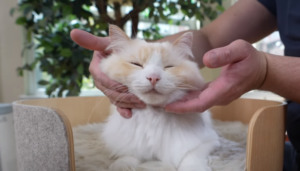
Remember, the goal is to make your cat feel loved, relaxed, and comfortable. With patience and practice, you’ll quickly become a pro at massaging your cat.
Health Benefits of Cat Massage
Massaging your cat regularly can lead to numerous health benefits.
- Improves Digestion: Gentle massages can stimulate your cat’s digestive system, assisting in the processing of food and the elimination of toxins. This can result in a healthier digestive system and better overall health.
- Boosts Immune System: The increase in circulation from massages can contribute to better immune system function. It helps distribute nutrients throughout the body, fortifying the immune system and helping your cat ward off illnesses.
- Stimulates Lymphatic System: Massages can assist in stimulating the lymphatic system, aiding in the removal of waste products and toxins from the body.
- Enhances Coat Health: Massaging helps distribute natural oils evenly on your cat’s coat, resulting in a shinier and healthier appearance.
- Supports Joint Health: Particularly for older cats, massages can help keep joints flexible, reducing the risk of stiffness and arthritis.
- Promotes Healing: Massages can help increase the blood flow to muscles, speeding up the healing of any injuries. [5]
FAQ
Do cats like being massaged?
Indeed, the majority of felines relish the experience of receiving a gentle massage. A gentle massage can help a cat relax, reduce their stress levels, and even increase bonding with their human companion. Just like humans, every cat is unique, and their reactions can vary. Some cats might prefer certain types of touches or massages over others. It is crucial to pay attention to your cat’s signals and promptly cease any activity if they exhibit signs of discomfort. Always make the experience positive and enjoyable for your cat. Massages should be a time of relaxation and bonding, never a cause of stress for your feline friend.
How do you give a cat a full body massage?
To provide your feline friend with a complete body massage, begin by softly caressing their neck and head, being mindful to avoid their whiskers and eyes. Use a light touch and move your hand in the direction of the fur growth. Next, slowly move down to the shoulders and the back, keeping your strokes long and soothing. When you reach the tail, be extra gentle as some cats can be sensitive in this area. Gently stroke the sides and belly of your cat, keeping in mind that not all felines appreciate belly rubs. Lastly, gently massage the legs and paws, but avoid touching the claws. Always be mindful of your cat’s reactions during the massage and pause immediately if you notice any signs of discomfort or unease.
How do you pet or massage a cat?
Petting or massaging a cat involves a gentle and mindful approach. Here’s a step-by-step guide:
- Find a Calm Environment
- Approach Gently
- Start with Petting
- Transition to Massage
- Observe Their Reactions
- End on a Positive Note
Remember, the goal of petting or massaging your cat is to enhance their comfort and well-being. Always respect their boundaries and allow them to guide the process. With time and practice, this can become a nurturing and bonding experience for both of you.
Where do you touch a cat to sleep?
To help a cat sleep, certain spots can be gently massaged or stroked. These include:
- The Base of the Tail
- Between the Eyes
- Behind the Ears
- Under the Chin
- Chest Area
Keep in mind that each cat is one-of-a-kind, with their own individual preferences that make them special. Always observe your cat’s reactions and adjust your touches accordingly. If your cat displays any signs of discomfort, it is crucial to promptly cease your current activity.
Do cats like their feet touched?
While some cats may tolerate their feet being touched, many do not enjoy it. Cat’s feet are very sensitive as they contain many nerve receptors. Also, their feet are important for their sense of balance and mobility, as well as for defense. So, they may instinctively retract or pull away if you try to touch their feet. It’s always important to respect your cat’s boundaries and comfort. If you wish to touch your cat’s feet, perhaps for grooming or health check purposes, always approach gently and back off if your cat shows signs of discomfort.
How can I pleasure my cat?
To pleasure your cat, it’s important to understand their individual preferences and respect their boundaries. Here are a few tips:
- Provide Playtime
- Offer Treats
- Provide a Comfortable Environment
- Regular Grooming
- Affection
- Enrich their Environment
Keep in mind that each cat possesses its own distinct traits and will have individual preferences. By understanding their likes and dislikes, you can provide a positive and enriching environment that pleases your cat.
Do cats like you touching them?
While many cats do appreciate physical contact, it’s crucial to bear in mind that each feline is a unique individual with their own distinct preferences and boundaries. Some cats love being petted all over, while others prefer specific areas like their head or the base of their tail. Cats have varying tolerance for touch – some enjoy long petting sessions, while others prefer short, intermittent contact. Always be attentive to your cat’s reactions and body language to understand their preferences and boundaries. Purring, leaning into your touch, and relaxed body language are generally signs of enjoyment. However, if your cat moves away, shows signs of agitation, or displays other defensive behaviors like hissing or swatting, it’s best to give them some space. Respect their boundaries to maintain a positive and trusting relationship.
Does petting a cat relax you?
Yes, petting a cat can indeed have a relaxing effect on you. Studies suggest that stroking a cat can help reduce stress and anxiety. When you pet a cat, your body releases oxytocin – the “bonding hormone” or “cuddle chemical” – which can induce feelings of love and trust. Simultaneously, it can also lower the production of cortisol, the hormone responsible for stress. Furthermore, the rhythmic, repetitive motion of petting can have a meditative effect, helping to calm your mind. Finally, interacting with a cat can provide comfort and companionship, promoting an overall sense of well-being. It’s important to note that the benefits are mutual – your cat also enjoys petting and bonding time with you, which in turn enhances their comfort and happiness.
Do cats enjoy music?
While there’s no definitive answer as to whether cats enjoy human music, research suggests that they do respond more positively to music composed specifically for them. Cat music imitates purring and bird sounds, appealing to cats with similar frequencies and tempos. Some cats may show signs of relaxation and interest when exposed to this type of music. However, like humans, cats are individuals with their own tastes – some may enjoy it, while others might be indifferent. Always observe your cat’s behavior when playing music. If they seem relaxed and content, it’s a good sign that they’re enjoying the experience.
How to massage a cats face?
Massaging a cat’s face can be a soothing experience for them. Here are some simple steps to do it effectively:
- Begin With Gentle Touches
- Massage the Chin
- Massage the Cheeks
- Massage the Ears
- Massage the Forehead
Remember to keep your touch light and gentle throughout, and always observe your cat’s responses. If they show signs of discomfort, stop immediately. Some cats may not enjoy having certain parts of their face touched, so respect their boundaries. Massage can be a wonderful way to bond with your cat, but it’s essential to ensure they’re comfortable and enjoying the experience.
Useful Video: How to give a cat a back massage
Conclusion
In conclusion, understanding your cat’s preferences and providing a nurturing environment can greatly contribute to their overall well-being. Regular grooming, a comfortable atmosphere, affectionate touch, and mental stimulation are all integral to a cat’s happiness. Massaging your cat, particularly focusing on their preferred areas, can strengthen your bond and provide a relaxing experience for both you and your feline friend. However, always respect your cat’s boundaries and pay close attention to their reactions. Your cat’s comfort and enjoyment are paramount.
References:
- https://www.wikihow.com/Give-Your-Cat-a-Massage
- https://www.purina.co.uk/articles/cats/health/daily-care/cat-massage
- https://www.petfinder.com/cats-and-kittens/health-wellness/grooming/how-to-give-cat-massage/
- https://www.hepper.com/how-to-give-a-cat-a-head-massage/
- https://petkeen.com/how-to-massage-cat/





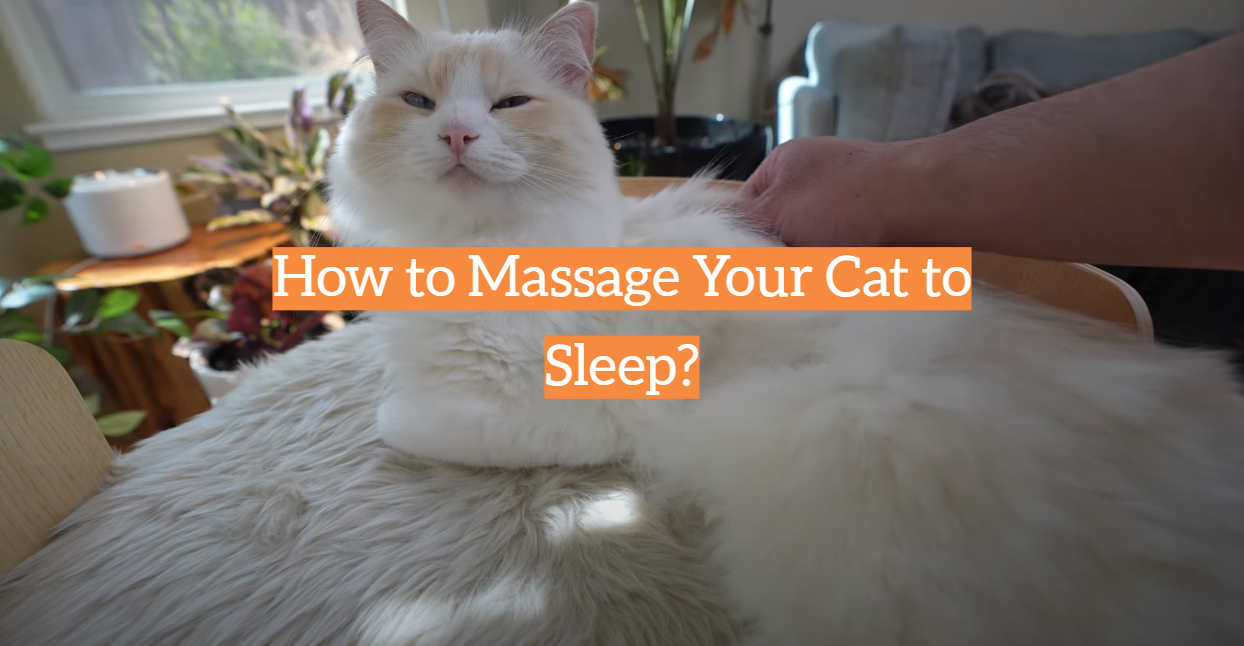


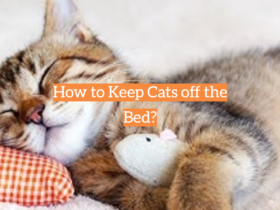

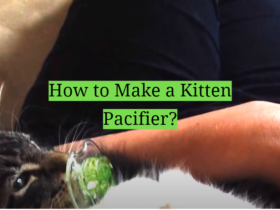
Leave a Reply